Liberation of Andromeda
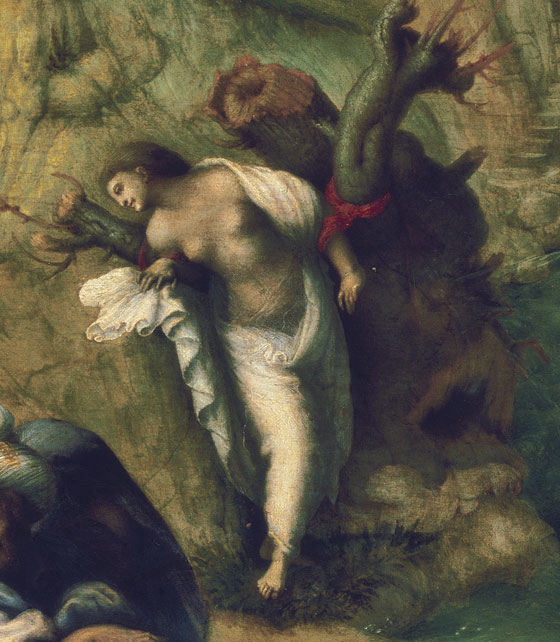
Andromeda was the daughter of the king of Ethiopia and his queen, Cassiopeia, who boasted that she was more beautiful than Juno, queen of the gods. In retaliation, the sea god Neptune sent a grotesque monster to ravage the Ethiopian coast. To end the destruction and appease the gods, the king offered his lovely daughter as a sacrifice to be consumed by the dragon. The gnarled trunk to which Andromeda is bound seems almost to come alive, its “mouth” yawning in the direction of the approaching monster. This detail is typical of Piero, whose animated natural forms become characters in the unfolding drama.
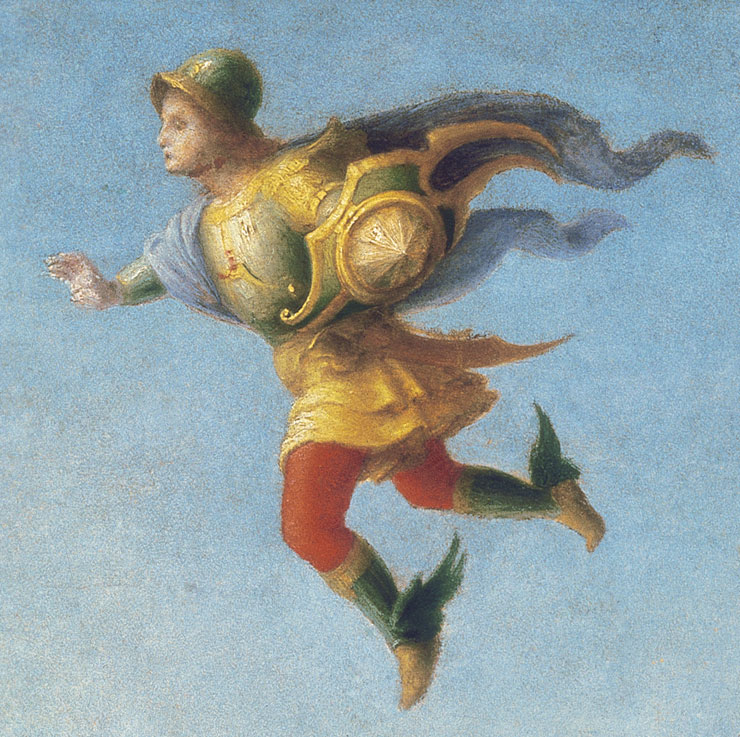
As he flew over Ethiopia, Perseus spied the chained maiden and was so enchanted by her beauty that he almost forgot to move his wings.
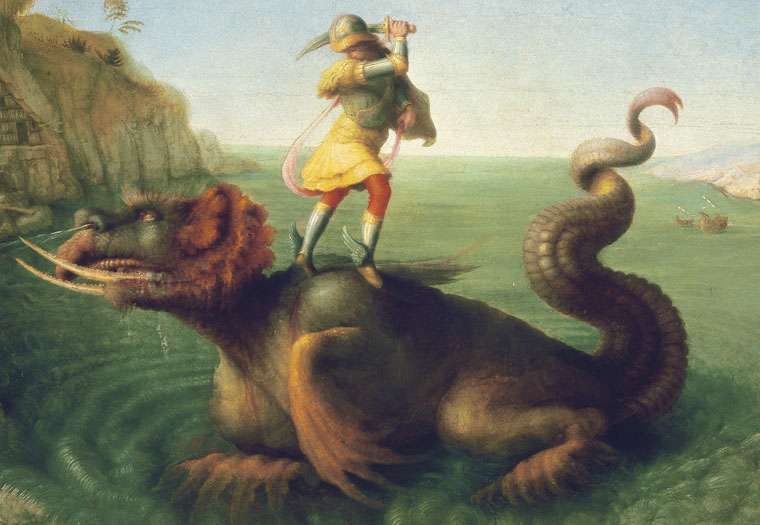
As Ovid writes, “Perseus came plunging in his steep dive down air and attacked the monster, who roared as his shoulder took the sword-blade up to the hilt.” The beast roils the sea’s surface in his death throes; his coiling tail, webbed feet, and long fangs are both monstrous and comically elegant, and seawater jets from his nostrils. Piero’s biographer Vasari wrote, “it is not possible to find a more bizarre or fantastic sea-monster than that which Piero imagined and painted.”
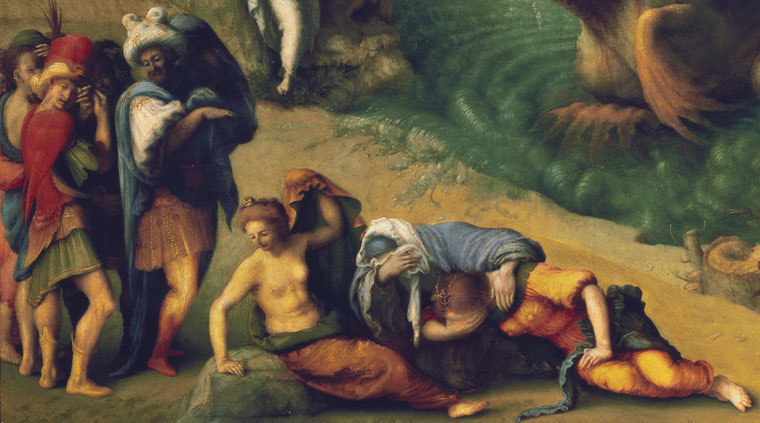
Andromeda’s anguished father, King Cepheus, identifiable by his lavish white turban, stands on shore. Her mother, Queen Cassiopeia, lies prostrate on the ground, hand shielding her eyes from the princess’s possible demise. At far left, Andromeda’s uncle and suitor Phineus, his costume adorned with extraordinary red-feathered wings, also looks away.
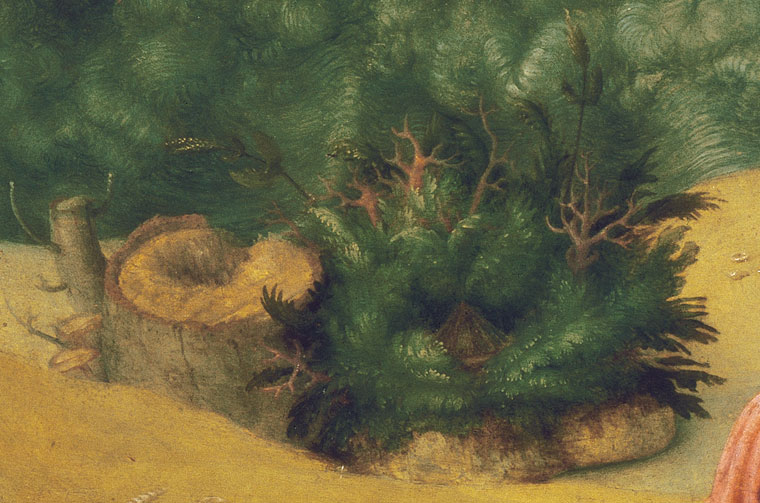
The branches of coral at the seaside reveal Piero’s clear understanding of Ovid’s Metamorphoses. After killing the sea monster, Perseus descended to earth and laid down the head of Medusa—another hideous monster he had slain. Medusa’s head carried the power to petrify anything it touched. When the warrior gently covered the bloody head with seaweed and twigs, they hardened into branches of red coral.
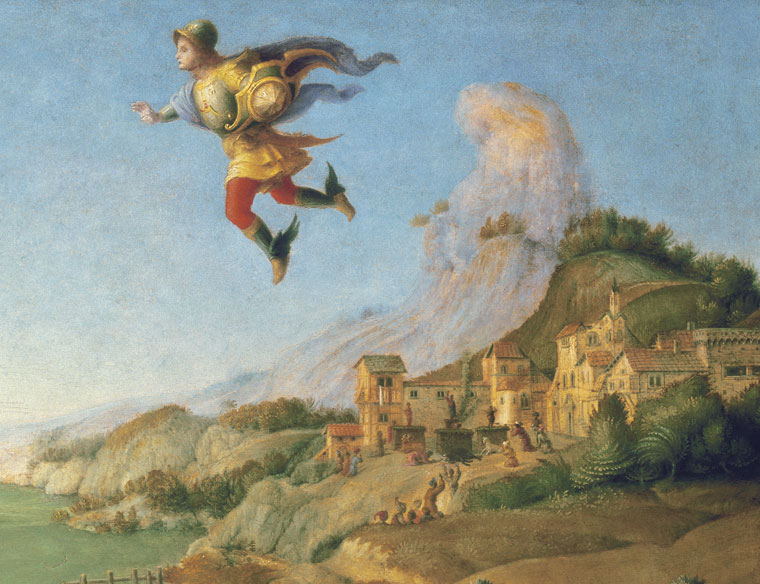
The coastal scene reveals Piero at the height of his powers as a landscape painter. Mellowed light effects and softened contours present an idyllic contrast to the violence of Perseus’ encounter with the sea monster. Piero’s biographer Vasari described the landscape of Liberation of Andromeda as “very beautiful, and the coloring sweet and full of grace.”
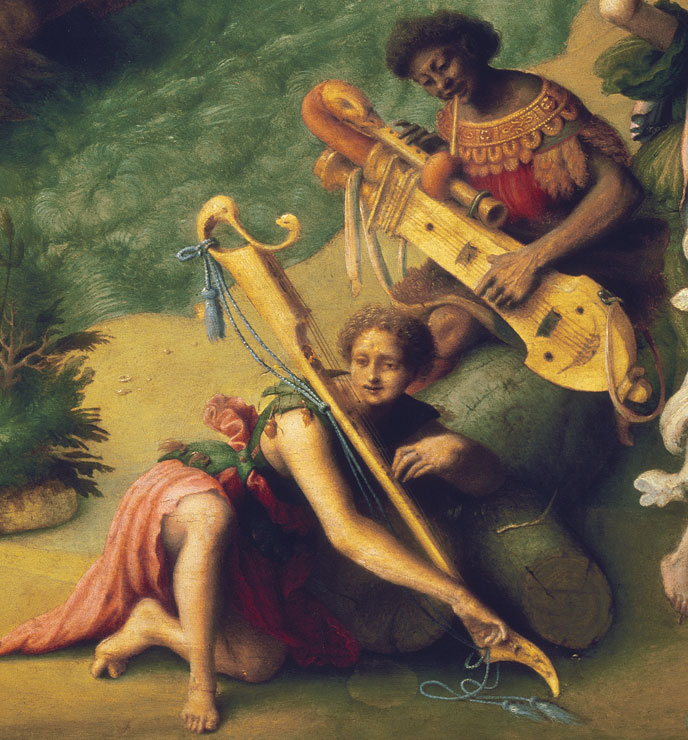
Musicians celebrate the princess’s return. Their outlandish instruments are another of Piero’s signature creations.
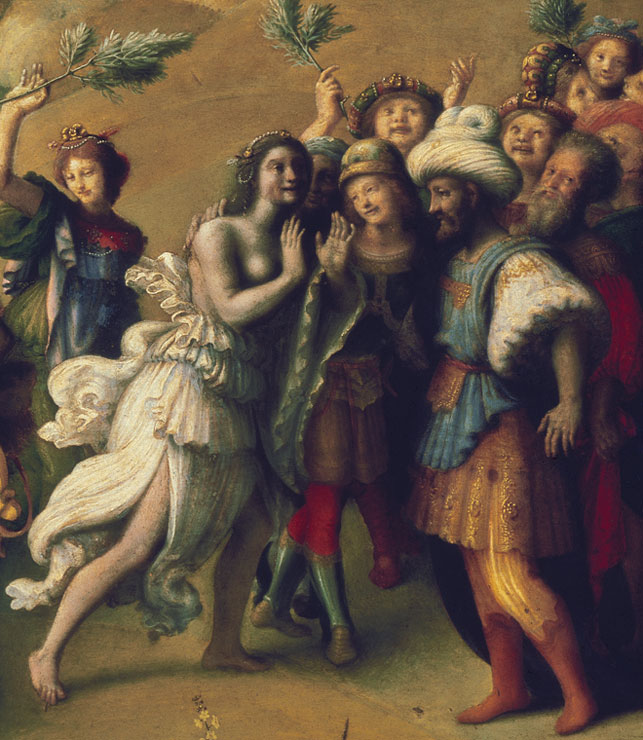
Perseus and the rescued Andromeda reappear in the lower right corner of the composition, where the hero wins the maiden’s hand in marriage—an appropriate conclusion to this narrative painting for the matrimonial bedchamber of two powerful Florentines. A gray-bearded figure, dressed in red, peers out from the joyous crowd. Conspicuous for making direct eye contact with the viewer, this wedding guest may be a self-portrait of Piero di Cosimo. With a knowing glance, the artist acknowledges his role in animating the tall tale.